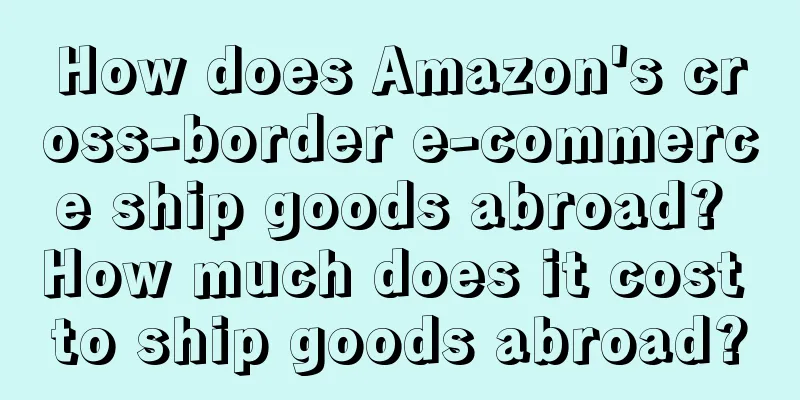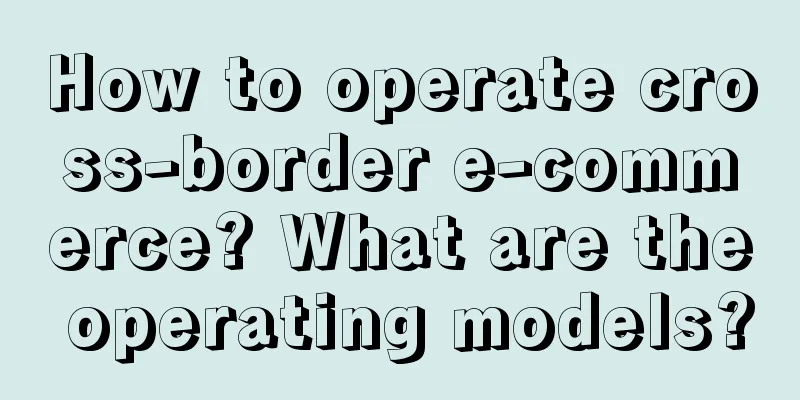How does Amazon's cross-border e-commerce ship goods abroad? How much does it cost to ship goods abroad?

|
More and more sellers are turning their attention to cross-border e-commerce, with Amazon being the most representative. So, how sellers can smoothly ship goods abroad has become an important issue. Next, let's take a look at Amazon's cross-border e-commerce shipping methods. 1. How does Amazon cross-border e-commerce ship goods abroad? 1. Amazon Global Delivery (FBA): Amazon provides a global logistics solution called Fulfillment by Amazon (FBA). Sellers send goods to Amazon's designated international delivery centers, and then Amazon is responsible for storage, packaging and delivery to countries around the world, which can reduce sellers' logistics risks and costs. 2. Fulfillment by Merchant (FBM): In addition to using FBA services, sellers can also choose Fulfillment by Merchant (FBM). Through FBM, sellers handle the logistics and delivery of orders by themselves, and can choose suitable express companies for international transportation. 3. Third-party logistics cooperation: In addition to the above two methods, sellers can also choose to cooperate with third-party logistics and use their global logistics network and professional services to ship goods abroad. In this way, you can choose the most suitable logistics solution and service provider according to your specific needs. 2. How much does it cost to ship goods abroad through cross-border e-commerce? 1. Freight: Cross-border e-commerce needs to pay a certain amount of freight when shipping goods abroad. The specific cost depends on factors such as the weight, size, destination country and selected logistics service of the goods. Sellers can obtain accurate quotation information by querying the corresponding freight calculation tool or consulting the logistics company. 2. Tariffs and taxes: In the process of cross-border e-commerce delivery, sellers also need to consider the issue of tariffs and taxes. Different countries impose different tariffs and taxes on imported goods. Sellers need to understand the relevant regulations of the destination country and be prepared before delivery. 3. Other costs: In addition to shipping and tariffs, sellers also need to consider other possible costs, such as packaging material fees, insurance premiums, etc. These costs will also affect the shipping cost and need to be considered when setting the selling price. Amazon's cross-border e-commerce delivery methods mainly include Amazon Global Delivery (FBA), Merchant Fulfillment (FBM) and third-party logistics cooperation. Sellers can choose the most suitable delivery method according to their own situation and consider freight, tariffs and other possible fees. |
>>: How to register in Wildberries China? What information is required?
Recommend
Does Amazon have any requirements for sku? How to set it?
Amazon has strict regulations and requirements for...
Wang Xing: Real masters are all working hard on their basic skills
Content source: compiled and summarized by the edi...
With a commission rate of 2.5% and an average customer spending of over 100 yuan, can Douyin take over the food delivery business?
After increasing its investment in local life serv...
With over 36 million members and an IPO on the horizon, how does Gu Ming, a brand with tens of thousands of stores, operate its private domain?
The continued growth of Gu Ming's performance ...
You have done so many successful brand cases, can you make us successful too?
Many companies or marketers often fall into a misu...
Alibaba International Station launches "Plan S"
In response to merchants affected by Indonesia'...
The most popular words on B station this year are two words
At the end of every year, along with the New Year ...
How do you publish products on a cross-border e-commerce platform? How do you operate it?
With the progress of globalization, more and more ...
How do Shopee buyers process returns? Who bears the return costs?
If you are a seller who runs a store on the Shopee...
Xiaohongshu search traffic is going crazy, 70% of the blue ocean entrance is here
Where will new business growth be found in 2024? B...
What should traditional brands do in 2023?
How should traditional brands leverage their own a...
Who pays for Lazada return shipping? What are the situations?
Some friends want to start cross-border e-commerce...
After reviewing our 60-day startup, we have learned three things:
In a highly competitive business environment, how ...
Does Amazon Merchant Manager registration require a trademark? Detailed answer
There are two ways for merchants to register on Am...
Does Lazada require a deposit? How much is the deposit?
Merchants who open online stores and operate store...









